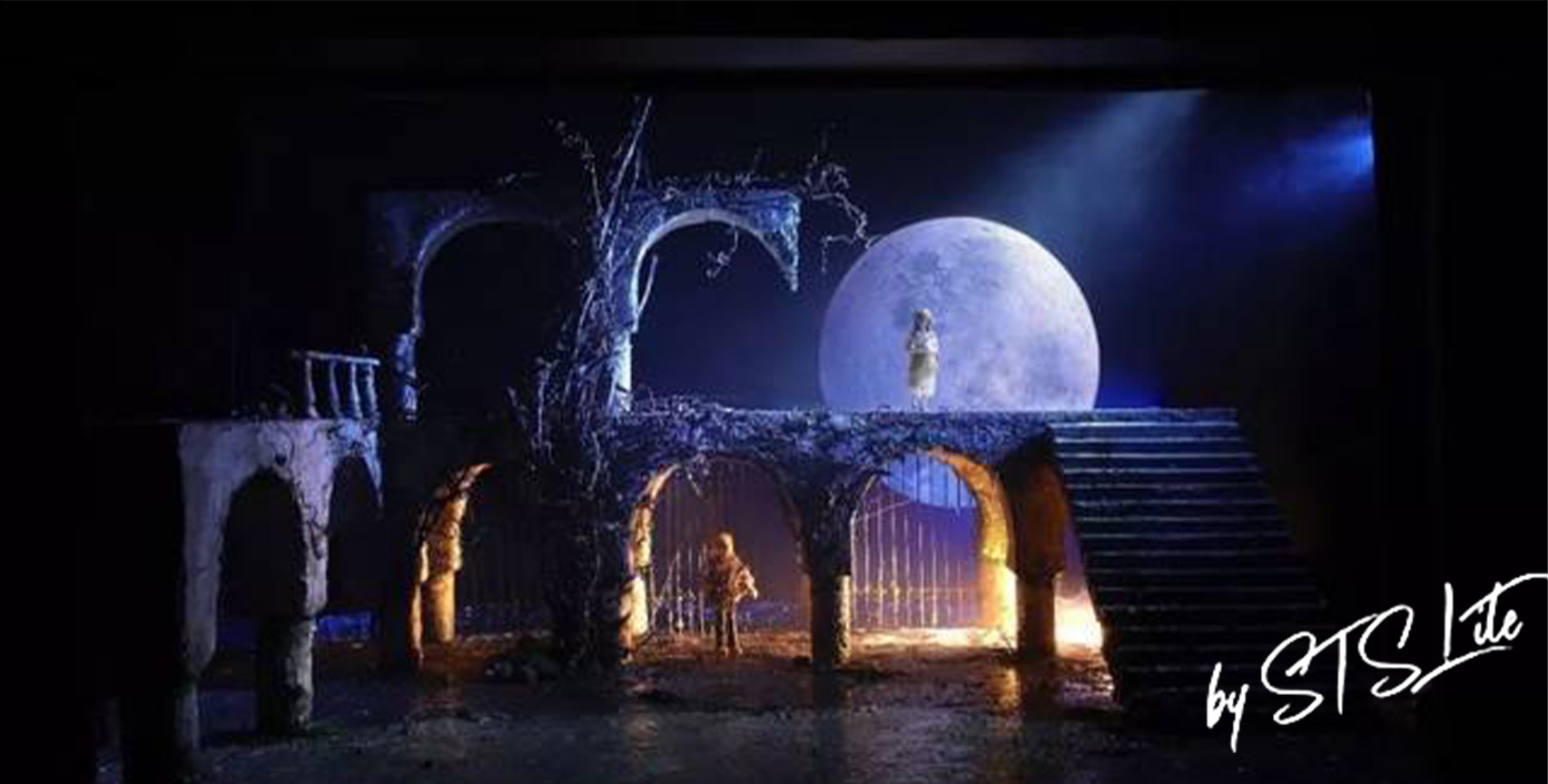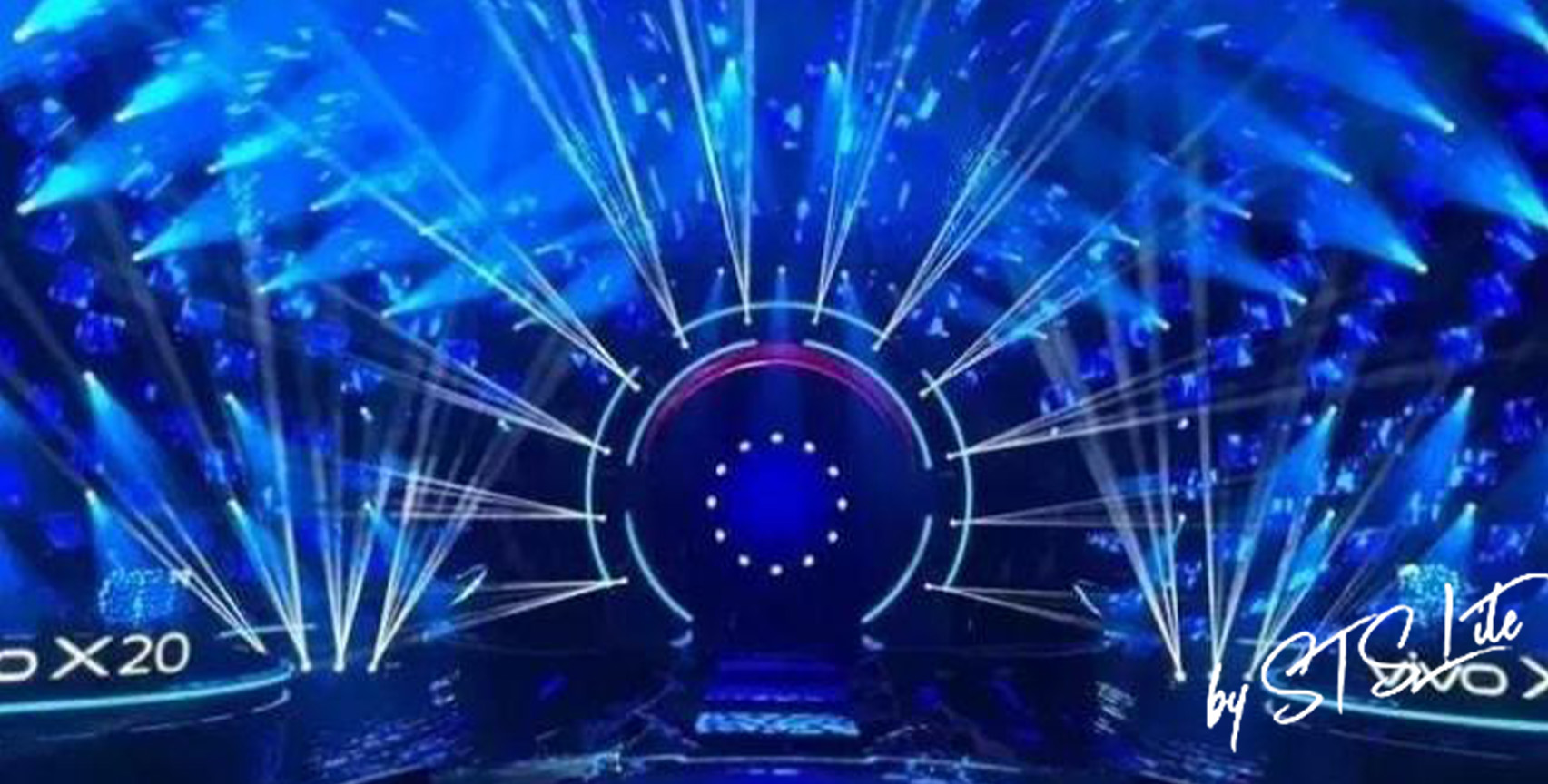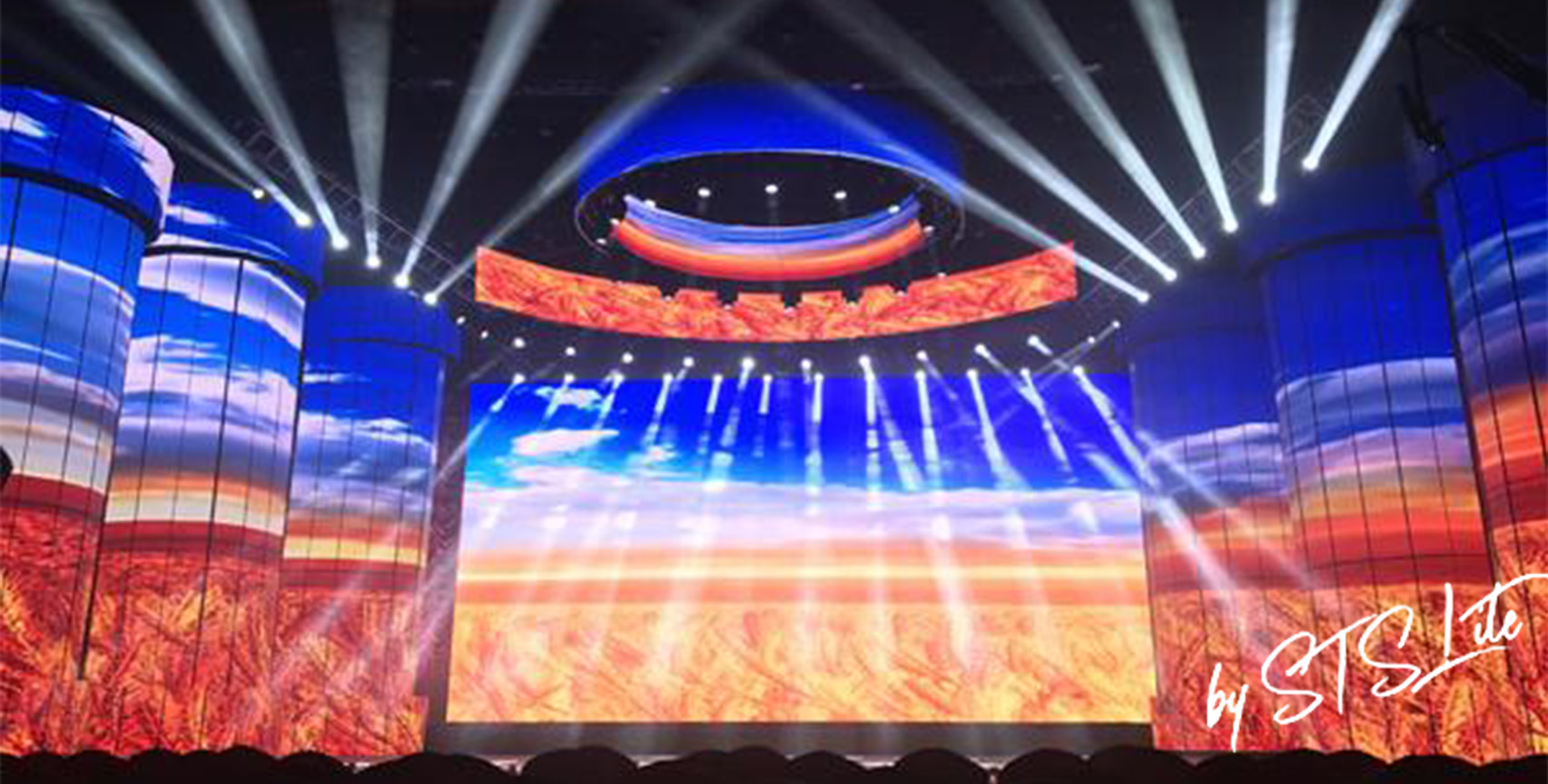With the progress and development of the times and the continuous updating of lighting methods, lighting uses various artistic and technical means on today's performance stages to create various shocking artistic effects. Theatrical stage lighting and TV stage lighting are so similar on the surface, but there are many differences.
1. The background produced by theater stage lighting and TV stage lighting The theater stage was first produced in ancient Greece. The earliest theater discovered so far is the Solig Theater built in 525 BC. At that time, the theater was composed of open air, stone benches, and altars, and was illuminated by natural light.
Later, in order to distinguish between day and night, candlelight and torches were used to illustrate the night. The substances used in the fire were vegetable oil, candles, animal oil, turpentine and other raw materials. However, due to certain smoke affecting the normal performance, it was gradually eliminated. The theater at that time was mainly built to celebrate the god of wine.
In 1560, the principle of mirror reflection began to be applied to the candlelight. The candles and small mirrors were hidden. The mirrors were placed on the back of the candles. They were carefully placed, and only a small number of candles were placed in the auditorium to make it clear to the audience to see the stage.
After the Song Dynasty, artificial lighting was used on the stage in China. There are written records in Zhang Dai's "Tao An Dream Recollection" in the Qing Dynasty, and the colored lights also began in the Song Dynasty. Liu Huiji used it in the performance of "Tang Ming Emperor's Tour to the Moon Palace". In the late Qing Dynasty, both the palace and the folk performed "Leng Cai Opera". On the birthday of Cixi in the tenth year of Guangxu (1884), 448 candles were used in one performance, and the folk performance "The Cowherd and the Weaver Girl" also used many magpie lamps[1].
In 1598, Angelo Ingenari proposed a controllable light source to control the light within the effective performance range. The stage performance lighting began to move from the lighting era to the controllable light era. In 1638, Sabaidini proposed a lampshade to control the brightness of the light. At this time, the early stage lighting control system was formed. In 1792, William Murdoch invented the gas lamp, and the gas lamp began to move towards the theater. This was an important innovation in stage lighting.
Edison invented the incandescent lamp in 1879. The Savoy Theatre in London, England, used incandescent lamps for the first time. This kind of lamp can not only extend the time, have good stability, but also prevent fire. It has been widely used today. This is the development of stage lighting. A milestone for the company.
After the Revolution of 1911, Chinese theaters generally used steam or electric lamps for lighting. From the time "Roar, China" was staged in Shanghai in 1933, a stage concentrating projection system began to be established on the Chinese stage. After 1954, China has successively built some theaters that meet international standards, introduced and established China's own stage lighting series, and developed China's unique slide show art [2].
The light-emitting diode (LED) was born in 1965 and began to be gradually applied to the stage. The powerful application of LED, integrating video technology, optoelectronic technology, microelectronic technology and computer technology, is the current goal and direction of stage lighting development.
2. Reasons for the appearance of TV stage lighting
TV program performances first appeared in Europe. At that time, Chinese TV programs were relatively few in developed countries in Europe and America. They were mostly used to educate and promote the masses. The true representative of Chinese TV programs was the Spring Festival Gala, which originated in 1983. The performance did not have a stage, it was performed on a concrete floor, and a row of chairs was set on the opposite side of the stage for the staff to rest, which later developed into the current auditorium.
In 1984, when the show required light on the ground, a light box was used as the stage. This light box was made of tempered glass and contained various colored light bulbs. The colored light bulbs could be used to transform various patterns and patterns. The running light effect was later developed into a platform made of wood to represent the stage. Wood has a certain degree of flexibility, and can be easily drawn and painted with colors. It has a strong decorative effect, easy to disassemble, easy to bind, and has a great Flexibility, and still use it today.
As TV changes from black and white to color, the working methods and tasks of lighting design have become more diverse, no longer just pursuing changes in brightness, adding colors, and more innovative elements. In order to increase the aesthetic appeal of the audience, in recent years 3D virtual technology followed one after another. LED technology is no longer just playing video material, but more as a background image to participate in interaction. In the Spring Festival Gala of 2007, our country’s TV stage lighting began to take shape and reached its peak in 2012. Enter the 3D virtual.
3. the common ground of theater stage lighting and TV stage lighting
Theater stage lighting and TV stage lighting are both performances that appear on the stage. One is to meet the needs of performance lighting and to create different time and space effects according to different performances; the other is to meet the needs of the audience and bring life to the stage. , To be transformed and innovated, to present more visual works to the audience. Theater stage lighting and TV stage lighting are both attached to the stage. Lighting is born for performances. Therefore, in terms of lighting, except for the special light effects required for some special stage performances, the basic light positions are the same. To the top light, to the back light, and then to the side light, they are all to illuminate, shape, and enhance the atmosphere. The purpose of theater stage lighting and TV stage lighting are the same, serving the performance.
4. the difference between theater stage lighting and TV stage lighting
The difference between theater stage lighting and TV stage lighting is mainly manifested in that the theater stage lighting directly serves the eyes of the audience, with only one side facing the audience. The focus is on the audience's visual perception. It does not consider the later factors such as audio and video. It only needs Take care of the scene, and the TV stage lighting is to be shown to the audience through the camera carrier, which is the picture seen by the camera instead of human eyes. The director can obtain the largest amount of information on the scene by repeatedly switching between different camera positions and different scenes. [3]. Since the human eye is much more tolerant and more tolerant than the camera’s, TV lighting must consider the camera’s latitude and the camera’s multi-camera issues, and there are many single or multi-person media in TV programs. Close-up lens, which requires accurate light position of the basic light, and more accurate modeling light for characters.
(1) Differences in lighting methods
The different stage scenery leads to different lighting positions. Here, the most common mirror-framed stage is taken as an example. The basic light positions of the mirror-framed stage are: surface light, top light, backlight, sky and ground row, side light (slap, flow) Light, column light, high side light, etc.) and other special light positions. On the basis of these light positions, TV lights also include frontal light, back light of the audience, host light, atmosphere light, etc., the reason why these lights appear It is also related to the different nature of the performance. Drama stage lighting usually appears in the form of rigorous repertoire, while TV stage lighting usually appears in entertainment variety shows. Then entertainment is inseparable from interacting with the audience. The audience is also part of the performance. All kinds of song and dance performances need a good atmosphere rendering. The main audience of TV shows is the audience friends in front of the TV. Therefore, the lighting performance is not like the theater lighting and focuses on the scene. The TV lighting mainly considers the effect recorded by the camera. . The theater stage lighting is mainly for the audience to watch the performance. In order to bring a better look and feel to the audience, the lighting will extend inward from the stage entrance, the brightness of the light decreases, and the light projected on the scene will not Too strong to create a sense of depth and layering.
First, surface lighting, theatrical stage surface lighting methods include: parallel lighting, cross lighting. The TV stage lighting must use the cross lighting method, the light position follows the camera position, and usually ensure that there is light on three sides. And the surface of the TV stage is not allowed to be colored, otherwise the skin color of the characters will change.
Second, the top light. On the TV stage, the top light has many functions. It can be used as backlight, close-up light for characters, partial light for performance area, connection light for performance area, atmosphere effect light (the stage color is dominant), scene light, and even more. Use less alone.
Third, backlighting, backlighting is a very important auxiliary light in the TV stage. It plays a major role in the shape of the characters and the sense of space. Especially now that large LED screens are widely used, the backlight can stretch the distance between the characters and the background, so that they will not be used. The characters and the background are too sticky, making the picture transparent. The backlighting of theatrical stage is usually used for coloring, rendering the atmosphere, or for the appearance of the main characters or other special effects.
Fourth, the side light focuses on the shape of the picture, combined with the surface light and the top light to make the characters and scenery more three-dimensional. As an auxiliary light, it is conducive to the shooting of the side camera and better connects with the front light.
Fifth, the auditorium light, usually a group of front light, a group of back light and side light, back light is used to bring out the character rendering atmosphere, it can be colored or patterned, the height of the surface light should not be too low, and the brightness should not be too high. It cannot be brighter than the stage, but the eyes of the audience must be taken into consideration, with side light as an aid. The color of the audience light must match the color used on the stage, and theatrical performances generally do not need the audience light.
(2) Differences in color and color temperature
Without color, there is no atmosphere. We use the warmth and coldness of colors to express the depth and level of the stage, as well as the atmosphere and artistic conception. In theatrical performance, the surface light can be colored light. In the TV stage lighting, in order to ensure that the skin color of the characters is restored to normal, under normal circumstances, the color light cannot be used for the down light. The use of color light in TV lighting needs to be considered comprehensively with the same side light, backlight, and side light. The use of color light must conform to people's aesthetic taste and color law, and at the same time, it must be unified with the actors' clothing, makeup, props and other elements.